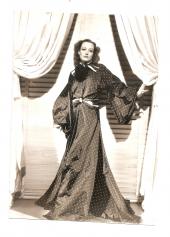The family that slays together stays together -- none more so than the Blakes.
They used to be the Manzonis, a notorious East Coast mob clan, until Giovanni (Robert De Niro) turned snitch. He's now Fred Blake, relocated under the Witness Protection Program -- with wife Maggie (Michelle Pfeiffer) and two teenagers -- to a quaint town in Normandy, where their alien presence is only slightly less noticeable than the Coneheads'.
Tommy Lee Jones is there, too, as an FBI agent with the thankless job of trying to keep them in line. Adapting to a new environment is challenging: The food -- all that butter and cream in everything -- offends their Italian palates ("Now, olive oil -- olive oil caresses your insides!"). In this particular Normandy invasion, conflicts between the "Blakes" and the locals abound. "Americans always act like they own the place," a villager complains. Grocery store clerks insult Maggie. The plumber demands a bribe for service. The kids are bullied at school.
For this close-knit quartet of recovering mafiosi, old habits of conflict-resolution die hard -- as do the old hitmen sent to kill them.
French director Luc Besson's "The Family," a black-comical action romp and loving homage to the mob-film genre, was co-written by Mr. Besson and Michael Caleo (a "Sopranos" contributing writer), based on the popular Tonino Belacquista novel, "Malavita." Its one interesting character twist involves Giovanni billing himself as a writer. Soon enough, he starts taking his new identity seriously, determines "to set the record straight" in his memoirs, to spill all his horrendous family secrets, and thus, of course, to get them all killed in the process.
"I don't like to cause pain for no reason," he muses reflectively, pecking on his portable typewriter, "because all my sadistic urges are satisfied when I cause pain for a good reason."
As a literary man, his children marvel at "the amazing number of things Dad can express with just the F-word." The local village film club is equally impressed when they invite him to speak at a screening of "Some Came Running" and the picture is replaced, at the last minute, by "Goodfellas."
It has its moments, including those resulting from the first pairing of Mr. De Niro and Mr. Jones. Their several scenes together are fascinating but not electric, as if each were working deferentially to out-low-key the other.
More fascinating in the Jones-De Niro encounter is the facial phenom: This isn't the Battle of the Bulge, it's the Battle of the Bags. No need for an overhead compartment. Plenty of room for hand luggage under their eyes.
Michelle Pfeiffer looks amazingly youthful and is highly energized, but she has relatively little to do here. She was much better "Married to the Mob" in Jonathan Demme's 1988 film.
Agreeable newcomers Dianna Agron and John D'Leo as the teen siblings do quite well, responding to Gallic peer pressure at school with serious Corleone-style pushback. But beautiful Ms. Agron's melodramatic romance with her math tutor -- complete with sad, soaring music -- is downright dumb.
So is most of the cardboard violence and the big insane firefight finale against the usual Italian villainous suspects (Jimmy Palumbo, Domenick Lombardozzi, Stan Carp, Vincent Pastore).
The chance to work in France seems to have been the stars' main motivation for making this picture. It's not bad. We could do worse than spend two hours watching Mr. De Niro and Mr. Jones play at disorganized crime. Director Besson, when interviewed about the film, had the right question: "What's the point of having Robert De Niro if you do nothing special with him?"
He just has the wrong answer.






